Photographs taken 2006
This area was granted World Heritage Site status in 2006
The Caradon Hill and Minions area (the major part of the "Liskeard Mining District") is one of ten areas of Cornwall and West Devon that won World Heritage Site status from the United Nations. This mining area includes the South Caradon Mine (which in 2004 was the subject of the BBC programme "Restoration"), and many other copper and tin mining sites that date between 1700 and 1914. In 2013, the old underground Slate Mine at Carnglaze Caverns at St Neot became affiliated to the World Heritage Site, and were appended to this area.
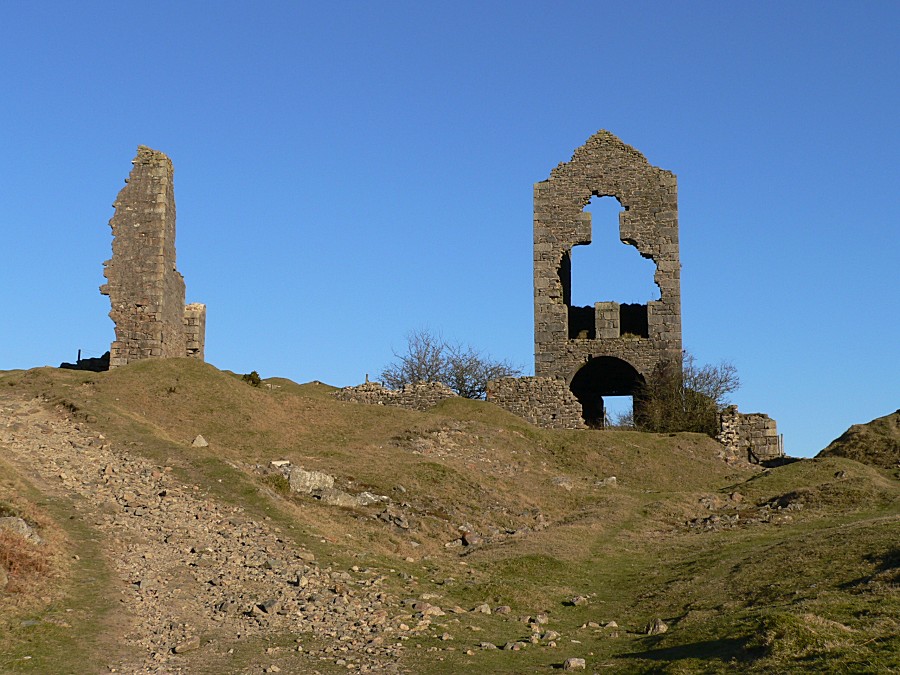
South Caradon Mine
Mining in Cornwall, whether it was for tin, copper, arsenic, or any of the other minerals mined here, was an extremely hard life, and miners lives were mostly short. If accident and injury did not find them first, then debilitating lung disease from the dusty unventilated atmosphere, and the long shifts "below grass", soon started to take their toll. Working underground, and climbing the long fathoms of ladders down and back to the surface at the end of every shift, was not for the faint-hearted. John Harris was a nineteenth century miner-poet, and what he writes here, from "The Mining Scene", is very evocative...
"Hast ever seen a mine? Hast ever been
Down it in its
fabled grottoes, walled with gems,
And canopied with torrid
mineral belts,
That blaze within the fiery orifice?
Hast ever,
by the glimmer of a lamp,
Or the fast waning taper, gone down,
down,
Towards the earth's dread centre, where wise men
Have
told us that the earthquake is conceived,
And great Vesuvius hath
his lava-house,
Which burns and burns forever, shooting forth
As from a fountain of eternal fire?
Hast ever heard, within this
prison house,
The startling hoof of fear? the eternal flow
Of
some dread meaning whispering to thy soul?"
(Reference: "The Meads of Love: The Life and Poetry of John Harris 1820-84", Paul Newman 1994; and quoted in Philip Payton's "Cornwall: A History", published in 1996 and 2004).
You can more photos read more evocative words about life underground on the Botallack Mine and The Crowns page.
Caradon Hill & Minions Area
Extensive Cornish Mining sites exist around the Minions and Caradon Hill areas, where copper mining was at its height during the 1840s to the 1890s. At Minions, you can visit the Minions Heritage Centre, that now occupies the Engine House of Houseman's Shaft, which was a part of the old South Phoenix Mine.
Minions is the highest village in Cornwall, and is an excellent centre to base your walking to discover the area's mining history, and to explore this part of the Cornish Mining World Heritage Site. Minions was originally called "Cheesewring Railway", and it grew as a central junction and shunting area on the newly built Liskeard & Caradon Railway, and provided much needed housing for the miners, quarry workers and railway workers moving in to the area. Visit the Minions Heritage Centre on the edge of the moor to start.
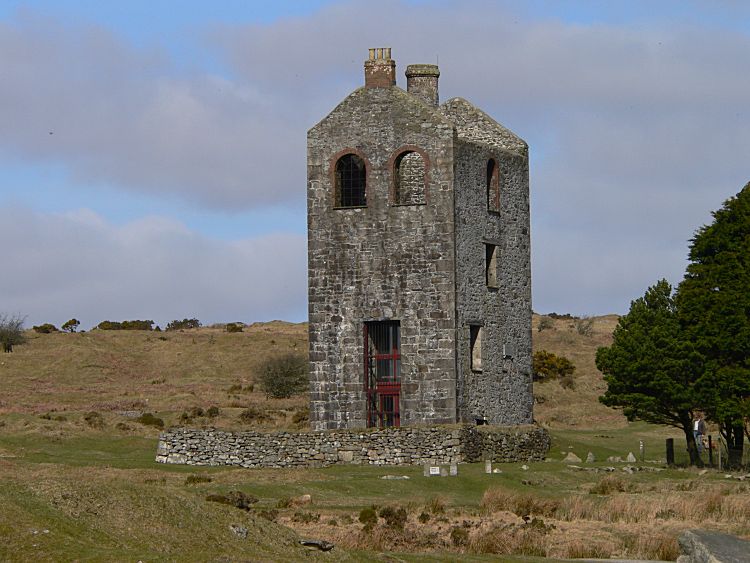
Minions Heritage Centre
Carnglaze Caverns (underground Slate Quarry)
became
affiliated to the World Heritage Site in 2013
A visit to Carnglaze Caverns near St.Neot will take you deep inside a Cornish hill, and into the underground world of the old slate quarrymen and slate miners. Carnglaze is set in the now very pretty wooded valley of the River Loveny. The caverns were originally a slate quarry, that "grew" underground to reach the better quality slate. Slate was quarried up until the early 1900s, when the cost of transport became too great, and their usage decreased. There are no doubt many houses around Cornwall with Carnglaze slate on the roof!
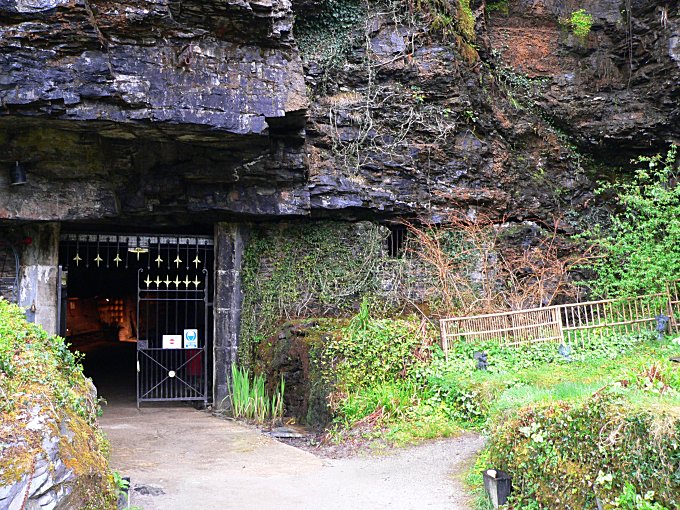
The entrance to the underground Carnglaze Caverns Slate Quarry (not
usually called a mine!)
For more extensive images and information, see Carnglaze Caverns on this website, and for more information about Concerts and Events held inside the Caverns, visit the Rum Store page.
Caradon Hill Area Heritage Project (CHAHP)
The Caradon Hill Area Heritage Project was a £2.8m project, funded largely by the Heritage Lottery Fund (HLF), with Cornwall County Council, and (then) Caradon District Council. The Minions Heritage Centre served as the base for CHAHP, and this wide ranging project has provided for significant conservation works on both the natural and industrial heritage of the area that covers not only Caradon Hill, but most of the south east corner of Bodmin Moor, and also south down to Liskeard. It includes several significant copper and tin mining sites, as well as many other prehistoric sites, a large number of wildlife, geological and conservation area sites, and over 100 scheduled monuments.
The implementation work which started in 2010, was completed in 2014, and was aimed at conserving the landscape and working nature of the moor, managing access to the many historic, natural, archaeological and industrial mining heritage sites, plus the physical conservation and consolidation of mine site structures; together with an extensive education and training programme, involving as many local people as possible.
Although the CHAHP programme has now finished, the project laid the foundations for ongoing work now being continued and co-ordinated through the Caradon Hill Area Heritage Partnership.
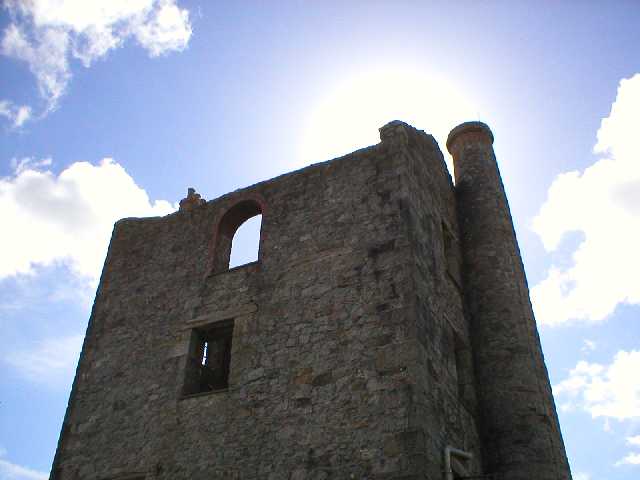
Houseman's Engine House (now the Minions Heritage Centre)
The sun may have set on Cornish mining's industrial past, but the rich heritage that is left to us from that past still needs to be carefully protected, but only within the overall management and conservation of both the natural and historical environments that have been left in our care. Most importantly, Bodmin Moor needs to be respected as the living and working landscape that it still is, where the welfare of the livestock and land is preserved.
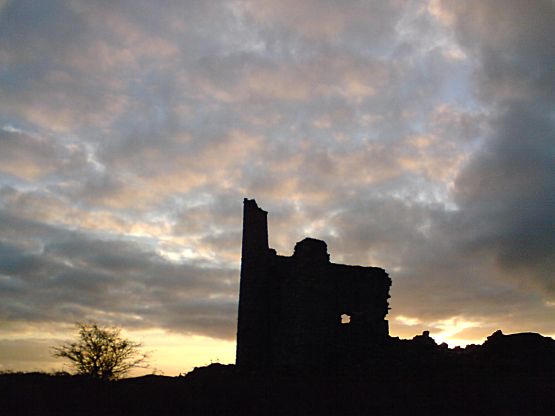
New Phoenix Mine ~ sometimes known as Silver Valley Mine
You can see the remains of the old Wheal Victoria Copper Mine at Golitha Falls on this website, including photographs from underground.
Visit the Caradon Hill Area Heritage Partnership website.
You can also find out more about Cornish Mining World Heritage at the Cornwall Council Cornish Mining WHS website.
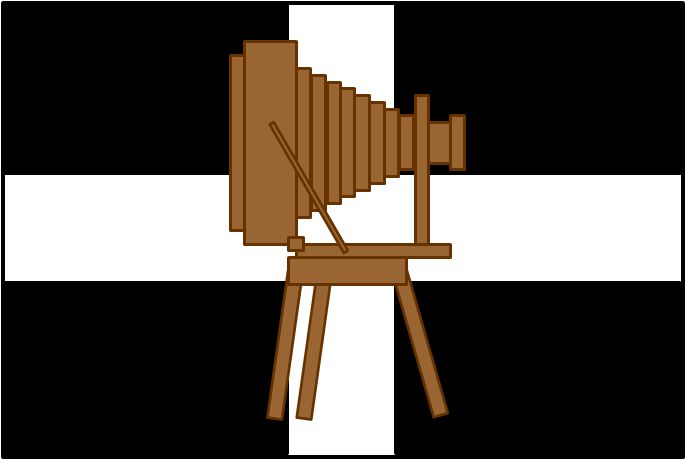

Connect with us, Like us and Follow us on Facebook!
PhotoFile Cornwall supports CoaST and Sustainable Tourism